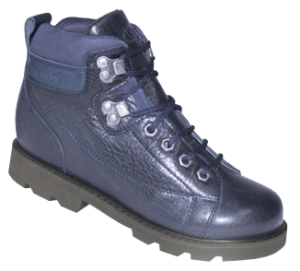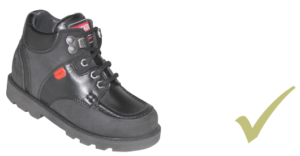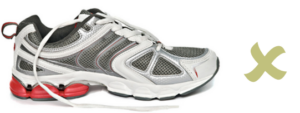What type of footwear is most suitable?
Generally lace up shoes are the best choice as they offer the most adjustment. Straps (Velcro or buckle) can be used, but offer less adjustment.
What type of shoe is unsuitable?
Sandals and low cut shoes are generally unsuitable; a shoe with a steep pitch i.e. high heel is not desirable.
Footwear to accommodate orthoses
You may need to buy some shoes to fit over the AFO or to accommodate insoles.
This often means buying shoes that are 1 or 2 sizes bigger than your child’s usual shoe
size. They do not need to be expensive, ordinary trainers or shoes are fine.
Look for shoes with laces that reach down as far to the toes as possible.
- Look for shoes that are deep and have adequate width.
- Sometimes taking the inside sole out creates extra space.
- Take your child’s AFO with you when you buy shoes.

Footwear for adaptions i.e. shoe raise or rocker soles:
The best footwear to buy is that in which the sole and heel units are made up of obvious layers. These are the easiest to adapt, they will look better and last longer.

Footwear with exaggerated shaping or variable colours in the sole or heel unit are difficult to adapt and the finished adaption will be much more noticeable.

Footwear with special sole and heel units such as air cushion, gel cushioning or flashing lights should be avoided.
Orthotic Department tel: 01582 497198.
